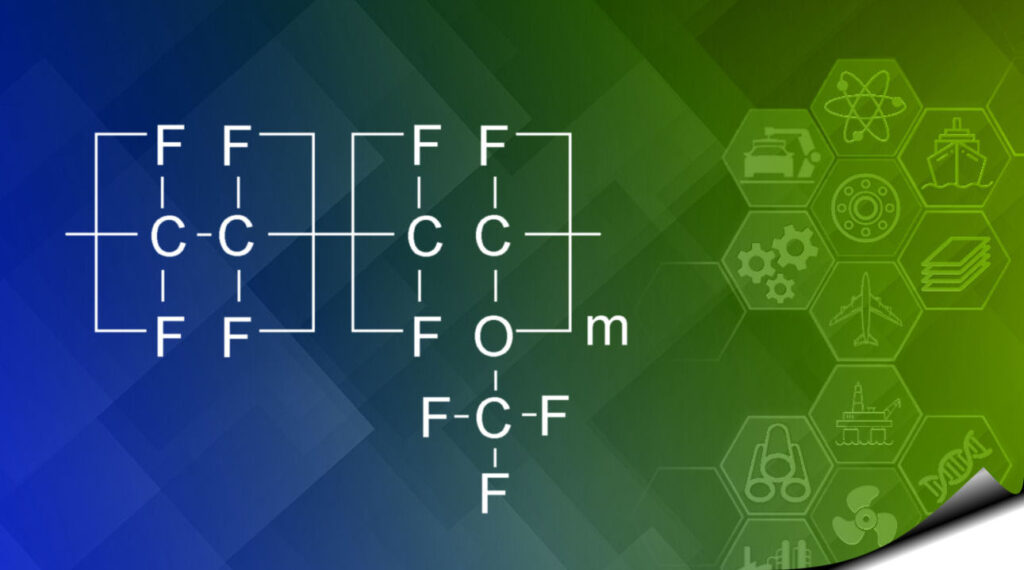PFA

- Chemically stable
- Low friction properties
- Reduced creep
- Good temperature performance
- Many properties similar to PTFE
Perfluoroalkoxy (PFA)
The properties of these polymers are similar to those of polytetrafluoroethylene (PTFE). Compared to PTFE, PFA have better anti-stick properties, higher chemical resistance on expense of a lesser scratch resistance. Other than in PTFE, the alkoxy substituents allow the polymer to be melt-processed. On a molecular level, PFA have a smaller chain length and higher chain entanglement than other fluoropolymers. They also contain an oxygen atom at the branches. This results in materials that are more translucent and have improved flow, creep resistance, and thermal stability close to or exceeding PTFE. Thus, PFA are preferred when extended service is required in hostile environments involving chemical, thermal, and mechanical stress. PFA offer high melt strength, stability at high processing temperatures, excellent crack and stress resistance, a low coefficient of friction. Similarly advantaged processing properties are found in fluorinated ethylene propylene (FEP), the copolymer of tetrafluoroethylene and hexafluoropropylene. However FEP is ten times less capable to withstand repeated bending without fracture than PFA.
PFA are commonly used as materials for piping and fittings for aggressive chemicals, as well as corrosion-resistant lining of vessels in the chemical-processing industry. Typical applications include the construction of gas scrubbers, reactors, containment vessels, and piping. In coal-fired power plants, they are used as lining for heat exchangers. By channeling crude gas through a PFA-lined apparatus the gas stream can be cooled below its condensation temperature without damaging the heat exchanger. Its use contributes to increasing the efficiency of the whole plant.
PFA are also used as inert materials for sampling equipment in analytical chemistry and for geochemical or environmental in situ studies on field site when it is particularly important to avoid chemical contamination of metallic ions at trace levels.
"Excellence afforded"
Ultra high performance polymers – delivered globally
